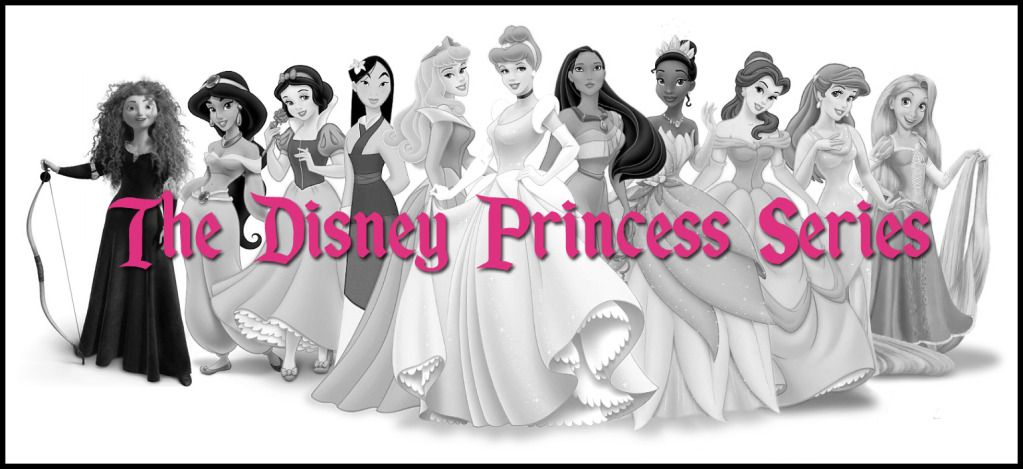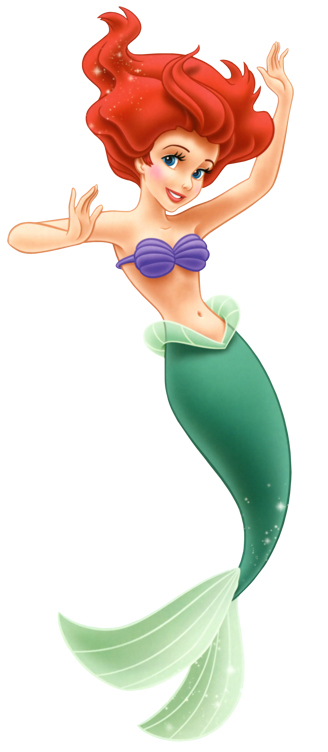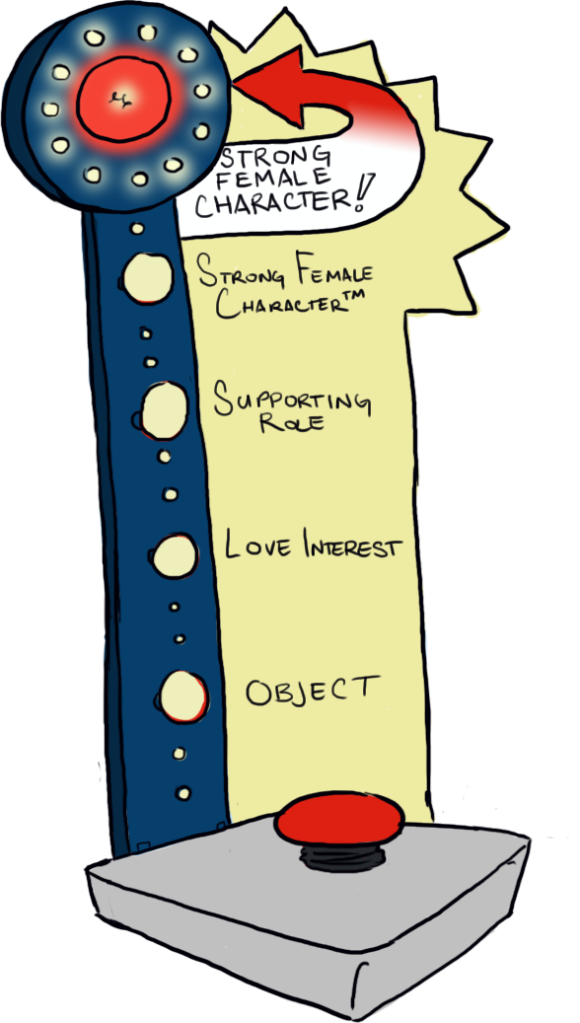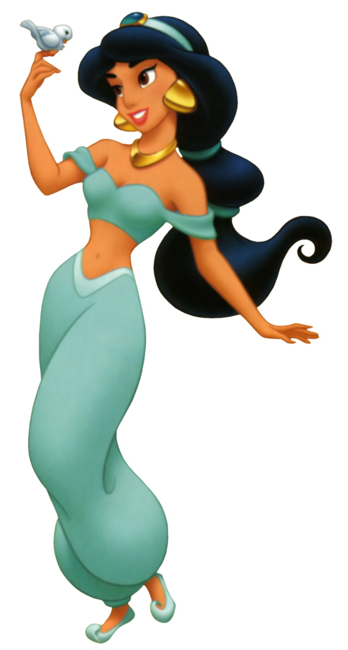Because we were born in the year of Disney’s rebirth, the three princesses we will be discussing this week were omnipresent throughout our childhoods and are near and dear to our hearts. As a baby, Megan was lulled to sleep by her mother singing “Part of Your World,” and Ashley once watched The Little Mermaid six times in a single day. Ashley asked for Belle’s library for Christmas when she was five. Watching Beauty and the Beast: The Enchanted Christmas was the most traumatic experience of Megan’s life up to that point. Megan’s younger sister desperately wanted a pet tiger entirely thanks to Rajah.
Now, twenty years later, we want to break through our nostalgic remembrances and find out whether the characters themselves are as strong as our childhood attachment to them.
Ariel
Ariel’s debut marks a real change in the Disney princess model: the development of a personality. Unlike her ostensibly perfect predecessors, Ariel is introduced in a scene which highlights her imperfections. Although she has a beautiful voice, she can’t be bothered to show up for rehearsals or, indeed, major concerts which are designed around her. Instead, she spends her time lifting human artifacts from shipwrecks and ignoring her friend’s warnings of danger. She is foolishly fearless, exceedingly curious, hopelessly naïve, and intensely emotional. She is, in short, the breath of fresh air needed to revive the princess brand.
Her freshness lasts through her “I Want” song, in which she reveals her desire to experience every facet of human life. She collects souvenirs of this place she cannot visit with the same dedication as any particularly obsessed Trekkie or Whovian; unlike them, however, she knows that her other world actually exists as more than the escape she imagines it to be. Equating life on the surface with freedom from her father’s restrictive rules, she imagines it as a paradise where “they understand/ That they don't reprimand their daughters/ Bright young women, sick of swimmin'/ Ready to stand.” More than a mysterious physical location, the human world is the realm of adulthood. This father-daughter conflict could easily have driven the plot, but that would have been a deviation from both the Disney princess formula and the original Hans Christian Andersen fairy tale (because fidelity to source material is obviously Disney’s strong point).
No sooner has Ariel completed her plea to become “part of your world” than we learn its intended audience: the first conventionally attractive human man she sees. Here we do have to give her credit for saving Prince Eric’s life, which is more than the earlier princesses ever did. What we don’t have to give the film credit for is the way in which both Ariel and Eric become obsessed with each other, Eric desperately searching for a beautiful voice and Ariel translating all of her humanity-related desires into desire for one human. She has always viewed humanity through the things it produces; with Eric, she is saved the trouble of making him into an object to collect, as she has found a guy that has already been made into a statue. It is only when she loses the statue that she must collect the man.
Yes, we’re talking about the real change to the princess model: the deal with the devil. This is perhaps the most contentious aspect of Ariel’s character; in essence, she sacrifices her voice and her familial relationships for a dude. This is also the moment when Ariel exercises the greatest agency, because Disney apparently wants to make our jobs more difficult. With the loss of her voice also comes the loss of her agency, as she spends much of the rest of the film waiting for things to happen to her. She can only will Eric to kiss her and, when he is manipulated into an engagement with Vanessa, she waits for others to stall the ceremony. The otherwise useless Scuttle rallies a veritable army of sea creatures to terrorize the wedding ship, and Flounder transports Ariel to the event. Because the former mermaid cannot swim, apparently.
Although Ariel doesn’t really do much of anything, what is more troubling is that she doesn’t change. King Triton, not Ariel, develops from an overly controlling xenophobe to a more tolerant person willing to trust his child to know what is best for her. When he offers himself in Ariel’s place, she makes no protest against a decision which would have disastrous results for the entire undersea population. She is the reason for Ursula’s ascension to power, but she is not responsible for remedying this mistake. Instead, Eric impales Ursula on the bow of a ship while Ariel lies stranded at the bottom of a whirlpool to be shot at like the proverbial fish in a barrel. At least this time the prince can aim his phallic symbol on his own. We just wish that the main character had done it instead.
Verdict: Strong Female Character™
Belle
(Disclaimer: While we are trying our best to be objective in writing this blog, we must admit in the interest of full disclosure that Belle is the Princess of Our Hearts. She’s the princess we identified with and idolized as children. That’s why we had to use an example involving Megan’s sister to discuss Aladdin, because when that film came out, we were still too busy being besotted with Belle to notice Jasmine.)
Belle is the first princess who is not the recipient or victim of a magic spell; like the princes, she is fated to break the curse, which, for once, does not specifically involve a kiss. Belle is introduced in a song which tells us simultaneously what she thinks of her “poor, provincial town” and what said town thinks of her. A bookworm stuck in what is made out to be the least literate village in France, she is considered odd. Because of this, she has a difficult time making personal connections with any of her neighbours. There is a general air of disapproval from the townspeople, as though her beauty is tarnished by her strangeness (basically, “Pretty girl -- real shame about that whole possessing a personality thing”).
The content of her “I Want” song, then, comes as no surprise. After Gaston’s proposal, during which he and the townspeople are disappointed to learn that Belle doesn’t want him, she describes her real desires:
Is he gone? Can you imagine?
"Madame Gaston!"
He asked me to marry him.
Me, the wife of that boorish, brainless...
Can't you just see it?
"Madame Gaston!"
His "little wife"
No sir! Not me!
I guarantee it
I want much more than this provincial life
I want adventure in the great wide somewhere
I want it more than I can tell
And for once it might be grand
To have someone understand
I want so much more than they've got planned
First, we see that Belle has no interest in looks, making her a far cry from Ariel, whose eyes practically bug out of her head when she first sees Eric. Belle is not merely rejecting Gaston, the undisputed town heartthrob, but the whole idea of settling down into a traditional domestic role. Her focus then shifts from what she could not bear to what she actually wants: adventures, presumably like the ones in her books. And here it is interesting to note that Belle is our first genre-savvy princess, who identifies her favourite part of her favourite book thusly: “Here’s where she meets Prince Charming, but she won’t discover that it’s him ‘til Chapter 3.” The song takes a much more personal turn in its final lines, as Belle reveals the profound loneliness which leads her to ask not for a handsome prince, but merely for someone who understands her and her dreams. Were this anything but a princess movie, that person could be a best friend of either gender; because it is, though, we know the person in question is a guy.
There are two men involved in Belle’s defining moment: the one she is saving and the one she is going to save. Unlike Ariel, Belle is willing to sacrifice herself to save her father, even with full knowledge of the beastly nature and appearance of her warden. One of the criticisms lodged against this film is the accusation of Stockholm Syndrome, suggesting that Belle becomes sympathetic to her captor and tolerates the Beast’s abuse. When her curiosity leads her to the West Wing and an encounter with the Beast’s rage issues, however, she is hardly tolerant. She runs from the castle, preserving her own safety, “promise or no promise,” proving herself to be self-sacrificing, but not up to the point of stupidity. Encountering wolves in the forest, she attempts to fight them off using a tree branch, showing her to be a very different character than Snow White, who merely covered her eyes as if that might be enough to ward off daggers. The Beast swoops in to save her, as we know a prince should, but the remarkable thing is that Belle saves him when it would benefit her to let him die. She is downright heroic.
This is the most fundamental difference between Belle and her predecessors: she is the hero of her story. She displays tremendous bravery on multiple occasions, and she is the one who must break the spell. She’s even the first princess with a horse, heretofore the exclusive territory of princes.
And she has a library. There is nothing cooler than that library.
There are two men involved in Belle’s defining moment: the one she is saving and the one she is going to save. Unlike Ariel, Belle is willing to sacrifice herself to save her father, even with full knowledge of the beastly nature and appearance of her warden. One of the criticisms lodged against this film is the accusation of Stockholm Syndrome, suggesting that Belle becomes sympathetic to her captor and tolerates the Beast’s abuse. When her curiosity leads her to the West Wing and an encounter with the Beast’s rage issues, however, she is hardly tolerant. She runs from the castle, preserving her own safety, “promise or no promise,” proving herself to be self-sacrificing, but not up to the point of stupidity. Encountering wolves in the forest, she attempts to fight them off using a tree branch, showing her to be a very different character than Snow White, who merely covered her eyes as if that might be enough to ward off daggers. The Beast swoops in to save her, as we know a prince should, but the remarkable thing is that Belle saves him when it would benefit her to let him die. She is downright heroic.
This is the most fundamental difference between Belle and her predecessors: she is the hero of her story. She displays tremendous bravery on multiple occasions, and she is the one who must break the spell. She’s even the first princess with a horse, heretofore the exclusive territory of princes.
And she has a library. There is nothing cooler than that library.
Verdict: Actual strong female character.
Jasmine
Jasmine is the first princess who is not referenced in the title and is therefore the first to be a legitimate supporting character. What is perhaps most interesting about her is the way in which she resists being reduced to a pawn in someone else’s game.
Despite having power, however, she lacks control over her own life. She is being forced to marry according to a law her father hasn’t quite realized he can change, and she does not hesitate to point out the unfairness of a life without choice. Choice is the operative word for Jasmine; although she does not get an official “I Want” song, one could easily imagine that it would be about freedom to decide things for herself. She resents the patriarchal model that allows her father, his advisor, and her suitor to finagle a deal for her hand, shouting, “How dare you, all of you, standing around deciding my future? I am not a prize to be won!” Jasmine has a tendency to deliver these kinds of outbursts, stepping into a room, telling everyone that she is not an object, and then leaving the men to continue fighting over her. While she does eventually exercise her power of choice -- “I choose you, Aladdin” -- she does serve as a sort of prize, as Aladdin had to defeat Jafar in order to win her.
That does not mean that she’s not willing to manipulate other people. On two occasions, we see Jasmine break out the feminine wiles. She attempts to lure Aladdin into admitting his lie and manages to distract Jafar as Aladdin sneaks back into the palace. In neither case is she entirely successful, so we’re not really sure why this was even included. Is the film suggesting that using womanly tricks is a valid method when one has no other options, or is the failure of her technique a condemnation of the use of feminine wiles?
This is Aladdin’s primary motivation. He wants freedom and riches, but what he really wants is Jasmine. He tailors his seduction techniques (and the song that facilitates them) to Jasmine’s desires; she must “let [her] heart decide” to see a “whole new world” with him. It’s choice and freedom, wrapped up in a magic carpet. Also, unlike The Little Mermaid, in which Ariel must transform herself into a completely different species in order to get the guy, in this film Aladdin changes himself in order to impress Jasmine. This doesn’t work. When they first meet, Jasmine is utterly unimpressed by Prince Ali’s obnoxious show of wealth and his over-inflated sense of entitlement, and she continues to be less than taken with Ali until he admits to being the “street rat” she had met in the marketplace. She requires honesty and hates being manipulated.
Conclusion
We found writing this post to be exceedingly difficult, as if the forces of nostalgia were preventing us from replacing our rose-coloured glasses with the cold lens of critical analysis. For many of us, these characters were among our best childhood friends, and it’s troubling to think that they may have led us astray. Still, this group demonstrates a marked development from the princesses of the ‘30s and ‘50s, reflecting the the influence of the feminist movement. Although the princesses’ stories still revolve around men, they all look for (an often nebulous) something more. They reject authority and demonstrate that it is not only people, but social conventions, that can restrict freedom. Perhaps most importantly, however, they pave the way for the next set of characters, and what we see as the zenith of the Disney princess.







No comments:
Post a Comment